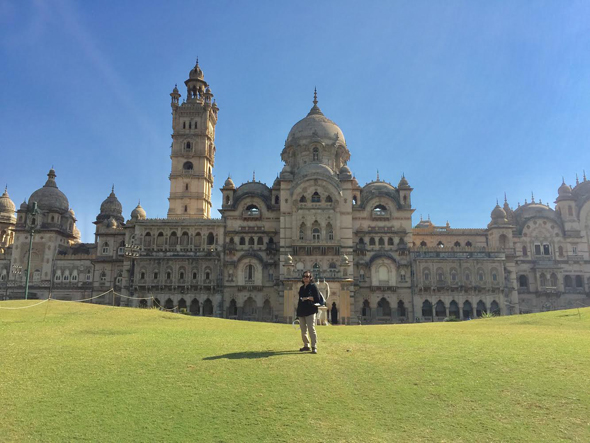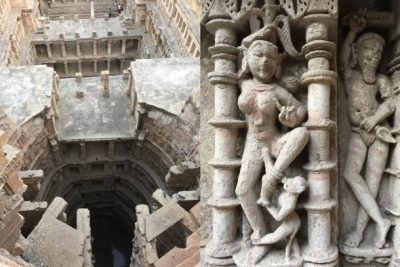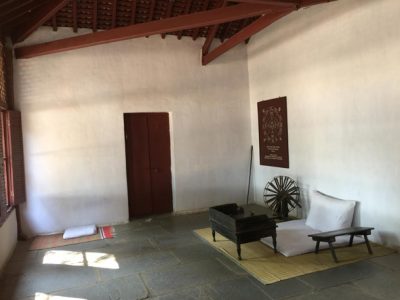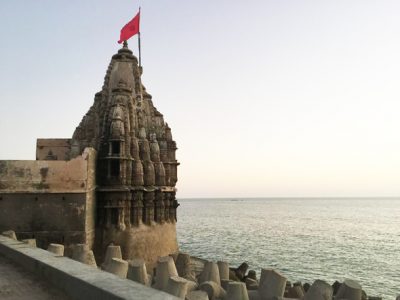Sightseeing in India Off the Beaten Path: Travel through Gujarat and Along Sea Coast
Saved under Community, Current Stories, Travel
Tags: Baytown, Clear Lake, Cypress, Desi news, Greater Houston, Houston, Houston Desi news, India, Indian American community, Indian News, Indians in America, Indo-American News, Katy, NRI, pearland, south asia, South India, Sugar Land, Texas, USA

Laxmi Vilas Palace is an extravagant building of the Indo-Saracenic Revival architecture, built by Maharaja Sayajirao Gaekwad III in 1890. The palace grounds include a golf course and a cricket field. A palace museum displays numerous Ravi Varma paintings.
By Pramod Kulkarni
On the Road: Like most working couples in the U.S., my wife Jyoti and I could barely manage two weeks of vacationing in India. As such, each trip to our native land would consist of a whirlwind of visits to the major urban centers for reunions with relatives and a few friends. Upon retiring in 2016 after 40-year careers, we had the opportunity to taken an extended vacation in India.
Over a six-week period, we not only managed to meet close friends and relatives in Mumbai, Pune and Hyderabad, but take some extended sightseeing trips. Most tourists to India first see the Golden Triangle of New Delhi, Agra and Jaipur. Next destination is typically Kerala.

“Rani ki Vav” (Queen’s Stepwell) is a UNESCO heritage site near Patan. The multistory well was built in the 11th century. The sculptures at the well are preserved because the well was covered by silt, and therefore, hidden from Muslim invaders until discovery in 1963.
We had previously done the Golden Triangle, and have yet to see Kerala. Instead, we made two excursions—one to Gujarat and second one to Maharashtra’s Konkan coast.
Why Gujarat? Someone had given me a Gujarat tourist guide a few years ago and I had managed to glance through descriptions of the state’s historical coastal cities and the cultural sites in Vadodara (formerly Baroda) and Ahmedabad.

Mahatma Gandhi’s ashram in Ahmedabad is located adjacent to the Sabarmati River. Gandhi’s spartan room is seen here.
Our niece works for a major travel agency in India and she set up a nine-day trip through coastal and central Gujarat.
Prefering a slow and steady journey, we settled on starting in Ahmedabad and traveling by car to Dwarka, then Somnath, Porbandar, island of Diu, Gir National Forest, Junagadh and ending with a two-day stay in Vadodara. If we get another chance to visit Gujarat, we will try to see Mount Abu and Rann of Kutch in the north and Surat in the south.
“Are you going on a Hindu pilgrimage?” asked an incredulous friend, who used to work for Reliance, and could not see why we would waste valuable vacation time in Gujarat.

One of the seaside temples in Dwarka. The main temple for Lord Krishna in Dwarka is besieged by vendors and long lines of worshippers.
With some apprehension, we made the trip and were extremely pleased with our Gujarat trip with its pristine Arabian coast, rural countryside and cultural landmarks in both Ahmedabad and Vadodara. We took a flight from Mumbai to Ahmedabad. Our driver met us at the airport and stayed with us until we took the return flight from Vadodara to Mumbai.
Gujarat has built an extensive network of highways that link the major cities. Off the highway, however, we had to endure body rattling journeys on single-lane roads, avoiding oncoming traffic of cars, motorcycles, heavy lorries and even bullock carts.
Some of our memorable memories included eating theplas at a roadside dhaba, seeing pristine beaches, abandoned castles,and enjoy the rural countryside of farms and oldtimers relaxing under banyan trees.
In future articles, I’ll cover our journey along the Konkan coast of Maharashtra, exotic forts near Pune and newly renovated palaces of Hyderabad.
